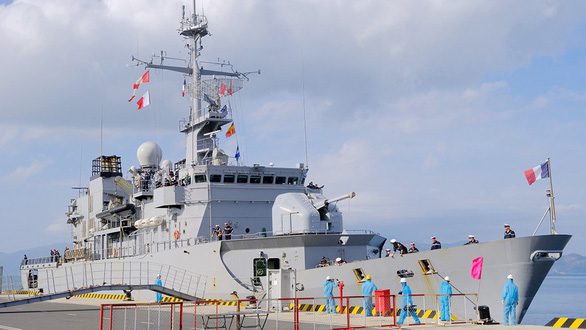After a series of diplomatic notes to the United Nations opposing China’s maritime claims, the United States’ allies have been sending warships to the East Vietnam Sea.
The People’s Liberation Army of China (PLA) launched a month-long drill in the East Vietnam Sea earlier this month.
The China Maritime Safety Administration announced a military exercise zone with a radius of five kilometers (3.1 miles) west of the Leizhou Peninsula in Guangdong Province.
Challenge signals
This is part of a plan to intensify combat exercises, known to help the Chinese military meet the “requirements of modern war.”
This development may deepen the differences between China and other countries in the waterway, which has been shown during the past time.
In February, China caused concerns for the region when it passed the new Coast Guard Law that would allow the country’s Coast Guard to use weapons against foreign ships.
The U.S. side has warned China against the possibility of using force in the sea while being concerned that Beijing would use this law to impose illegal maritime claims.
“The pattern of increasing Chinese assertiveness has been unbroken,” Greg Poling, senior fellow for Southeast Asia and director of the Asia Maritime Transparency Initiative at CSIS, told Tuoi Tre News.
“Last year we saw one incident after another, with both China’s Coast Guard and naval activities increasing despite the global pandemic.
“That trend continues into 2021 as Beijing seems determined to throw its weight around.”
Likewise, most observers this time believe that the month-long drill is just China’s normal move.
Singapore scholar Collin Koh Swee Lean noted that Beijing is even acting on the momentum of confidence because it has been able to curb the COVID-19 pandemic and was the only major economy to achieve positive growth in 2020.
“While China is consolidating its gains in the sea (and for that matter, other regional maritime flashpoints), taking advantage of the distraction of its rivals over COVID-19, it’s also engaged in posturing against the Americans, who are still regarded as the primary challenge to China’s attempts at exerting dominance in the waterway,” said Lean, who is a research fellow at the Institute of Defense and Strategic Studies under the S. Rajaratnam School of International Studies in Singapore.
The West’s increased presence
Although not specifically mentioned, the PLA’s stated exercise was immediately linked to the recent operations of the ships of the United States and allies in the East Vietnam Sea.
While the United States and other countries said they were deploying ships to the sea to protect freedom of navigation, the Chinese side warned other ships not to move into the drill zone during March.
China’s Ministry of National Defense has said that Beijing opposes “any countries that create tensions and increase military presence in the name of freedom of navigation.”
The Chinese emphasis on “the name of freedom of navigation” shows Beijing’s opposition to a series of recent developments in the resource-rich sea, with the specific presence of warships from North America and Europe.
On March 2, Reuters quoted high-ranking German government officials as confirming a plan to send an escort ship to Asia in August, which will pass through the East Vietnam Sea on the way back.
German diplomats and defense officials added that the ship would not enter “12 nautical miles” around entities in the sea.
However, the fact that a German warship was slated to pass through the sea for the first time since 2002 immediately commanded attention, against the context that U.S. allies have moved to deploy warships through the waterway.
Late last month, the UK Ministry of Defense said the HMS Queen Elizabeth aircraft carrier would reach Southeast Asia from April to June this year.
Australia’s Financial Review revealed that the country would participate in exercises with the HMS Queen Elizabeth, along with the navies of such countries as the United States, Japan, and the Netherlands.
The report came shortly after France’s amphibious assault helicopter carrier Tonnerre and corvette Surcouf left the port of Toulon on February 18 to begin a three-month mission in the Pacific, where they will twice cross the East Vietnam Sea and participate in drills with the United States and Japan in May. Before that, France’s nuclear attack submarine SNA Emeraude and support ship BSAM Seine already conducted a patrol in the same sea.
In January this year, Canadian frigate Winnipeg also transited the Taiwan Strait to emphasize the “free, open Indo-Pacific” message.
Carl Thayer, emeritus professor at the University of New South Wales, noted that all the European countries that will be involved in naval deployments to the sea this year are treaty allies of the United States.
“All have separately and collectively recognized that China’s intimidation, bullying, and military displays threaten their interests in a peaceful and stable maritime region,” he observed.
Like us on Facebook or follow us on Twitter to get the latest news about Vietnam!


















































